Could dark energy be caused by frozen neutrinos?
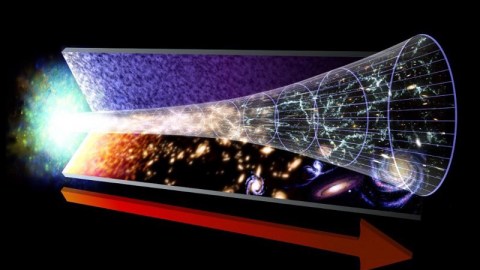
A new idea links the Standard Model’s most elusive particles with the zero-point energy of the Universe.
“If you’re puzzled by what dark energy is, you’re in good company.” –Saul Perlmutter
When the Universe began from its hot, dense, rapidly expanding state — from the Big Bang — there was no way of knowing it would have turned out this way. The Universe could have recollapsed almost immediately, or it could have rapidly expanded away into oblivion before a single atom formed. Instead, the initial expansion was almost perfectly balanced by the matter and energy present in the Universe, where the density of matter and radiation was almost exactly at that one, critical value it would take for them to eventually cancel each other exactly. As the Universe aged for seconds, then days, then years, then millions and billions of years, still the expansion rate and density dropped, approaching zero.
And then, right around the time our Sun and Earth were being formed, something funny happened: the distant galaxies that had been slowing down in their apparent recession from us all started to speed up once again. Somehow, the Universe began accelerating.

We can measure how the Universe’s expansion is speeding up, and what we find is 100% consistent with a phenomenon that has many names but that all describe the same thing:
• a cosmological constant,
• energy inherent to space itself,
• vacuum energy,
• or an unchanging scalar field.
There are some small wiggle-room parameters for how it might change over time — perhaps a slowly-varying scalar field, or some model of quintessence is allowed — but for the most part, it looks like dark energy is really, really constant. It’s only because the energy density of the other components of the Universe drop as it expands that dark energy ever becomes important.
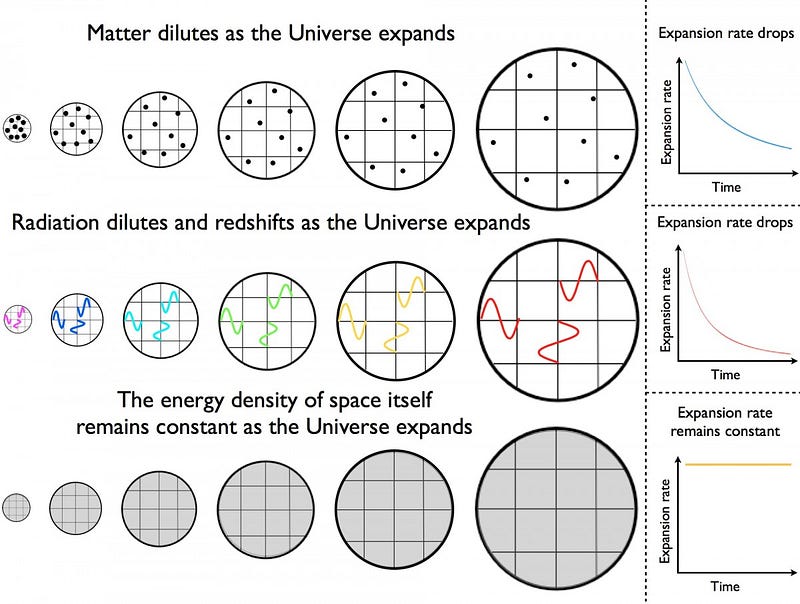
Yet as the volume of the observable Universe increases, the matter density drops, and the radiation density drops even faster, since its wavelength stretches to lower energy states. But because dark energy is a property of empty space itself, as the Universe expands, the density stays the same. After the first few thousand years of the Universe, matter becomes more important than radiation. After a few billion, dark energy passes matter. And by time we get to today, we can see what the fate of our Universe looks like: a lonely, empty void where everything beyond our gravitationally bound local group eventually disappears from our reach.
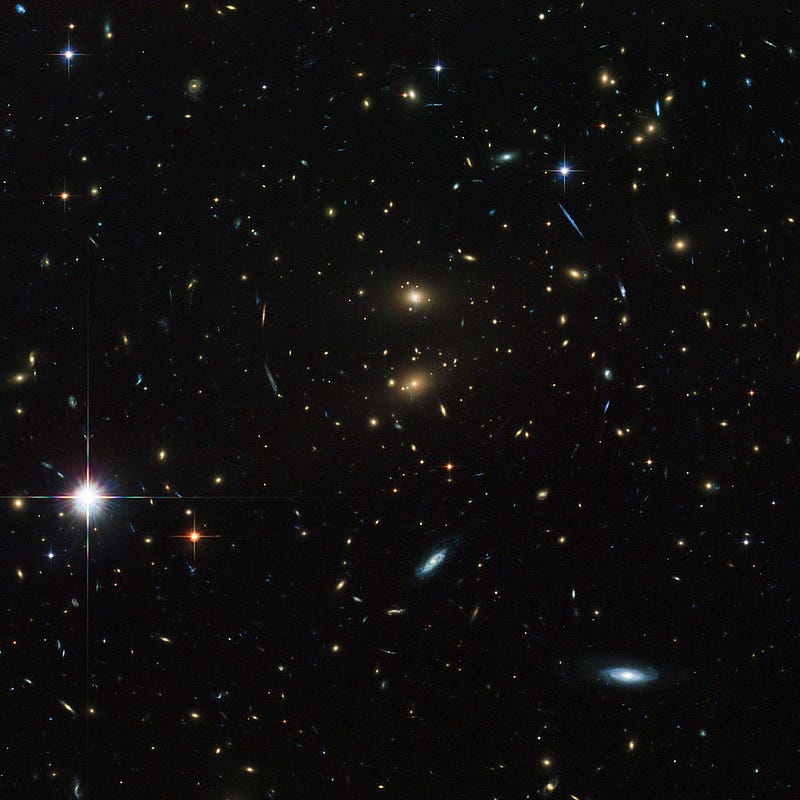
One of the biggest unsolved question in theoretical physics, then, is why? What causes this dark energy in the first place? What force compels the Universe to accelerate? And why is the apparent energy inherent to space some value other than zero?
Since its discovery in 1998, the accelerated expansion has lacked a compelling, simple explanation that didn’t hypothesize a completely new set of forces, properties or interactions. If you wanted a scalar field — a quintessence model — it had to be finely tuned. But in a very clever paper just submitted yesterday by Fergus Simpson, Raul Jimenez, Carlos Pena-Garay and Licia Verde, they note that if a generic scalar field couples to the neutrinos we have in our Universe, that fine-tuning goes away, and that scalar field will automatically begin behaving as a cosmological constant: as energy inherent to space itself. And it explains the question of “why, only now, does dark energy become important in the Universe?” As soon as the Universe cools enough that the neutrinos become non-relativistic, something that doesn’t happen until the Universe is millions of years old, the neutrinos become “frozen” in their coupling to the scalar field, and what emerges naturally looks exactly like our Universe’s dark energy.
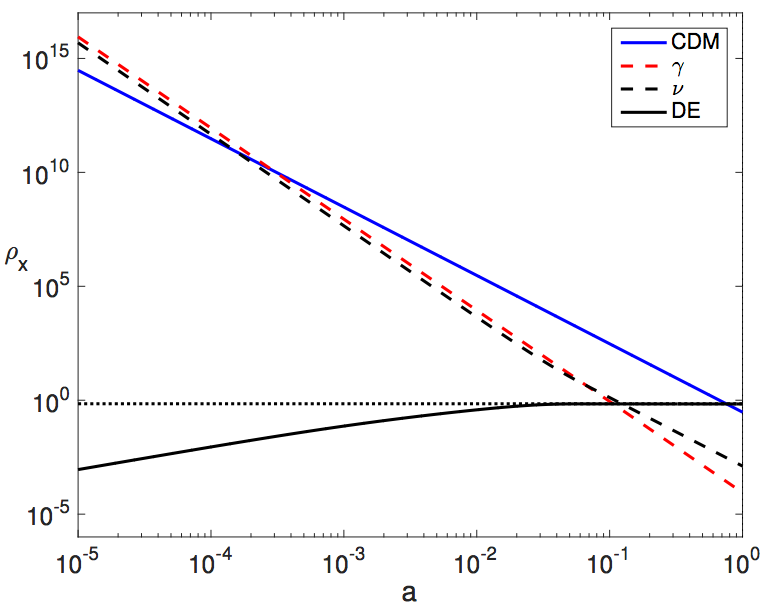
It does more than that, too; there are experimental signatures that we could look for to tell this mechanism apart from all others. There’s a specific type of decay that’s possible in some subatomic particles: neutrinoless double beta decay, where an atomic nucleus emits two electrons and no neutrinos. This is a decay that has never been seen before, but if this model is correct, not only will it be real, it will have a distinct signature from all the other models out there. Some variants of the model may also include a massive Dirac neutrino, something that hasn’t yet been detected but that we could look for experimentally.
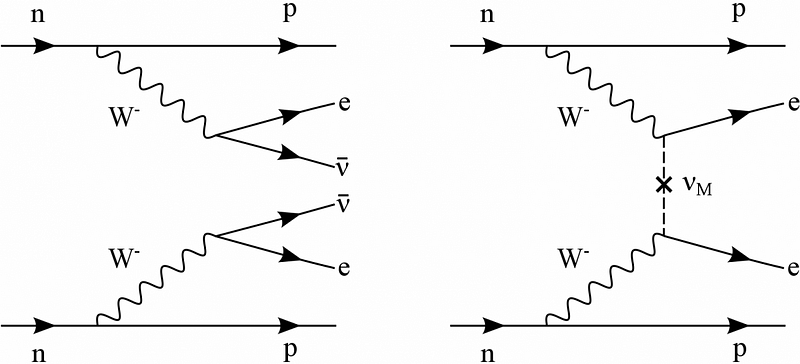
The analogy for how this “freezing” process happens is brilliantly simple, as the authors state:
The underlying phenomenology of this freezing process is founded in classical mechanics. A cyclist who is pedaling uphill might begin to struggle against an increasingly steep gradient. Yet no matter how feeble the rider’s power output becomes, they can always maintain a constant pedaling rate, simply by selecting an appropriately high gear. They can never roll backwards.
And if neutrinos and this new scalar field interact in this exact way, we’ll not only have our explanation for dark energy, we’ll actually be able — experimentally — to tell. It’s the best kind of new theory: testable, falsifiable and Universe-changing, if it’s correct!
This post first appeared at Forbes, and is brought to you ad-free by our Patreon supporters. Comment on our forum, & buy our first book: Beyond The Galaxy!





